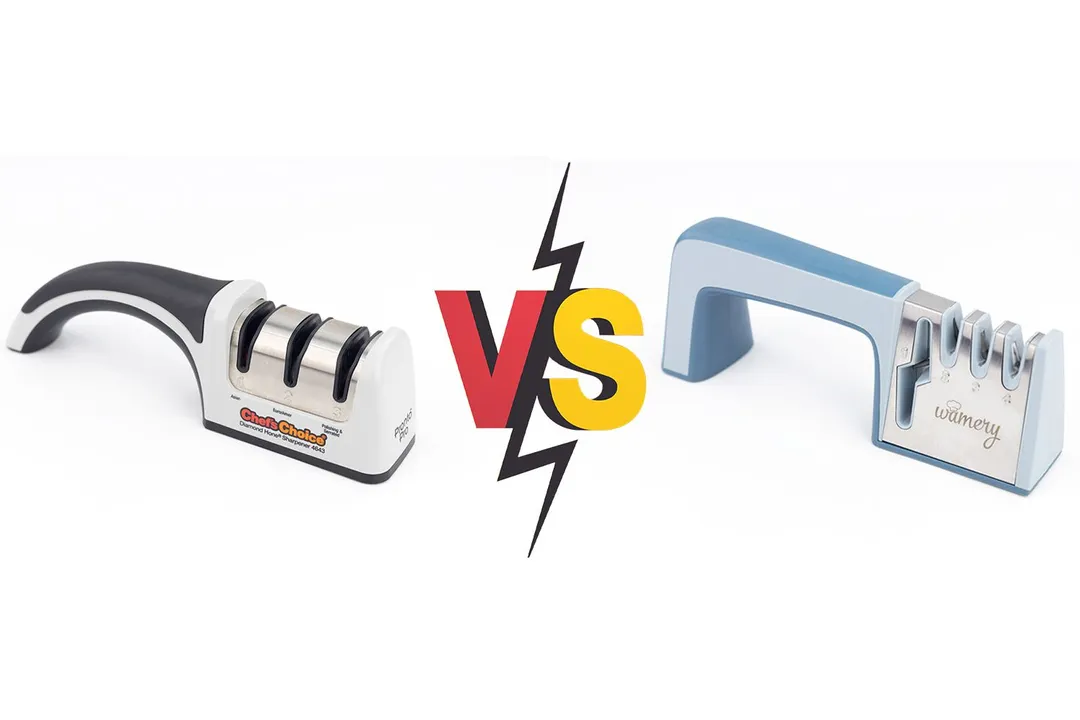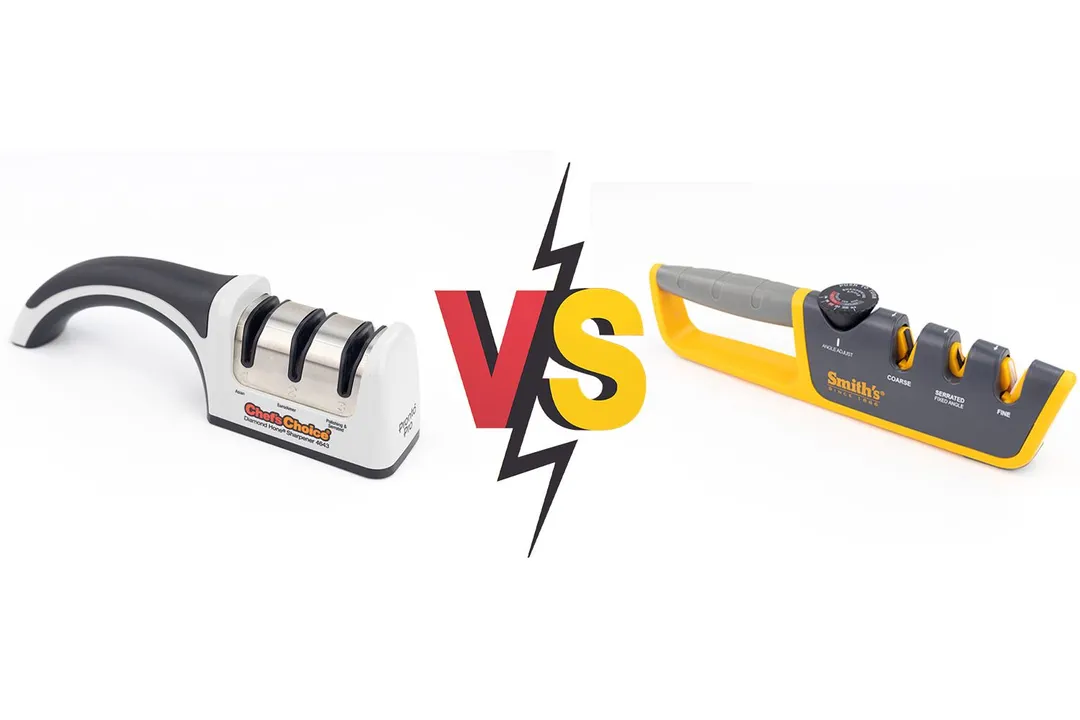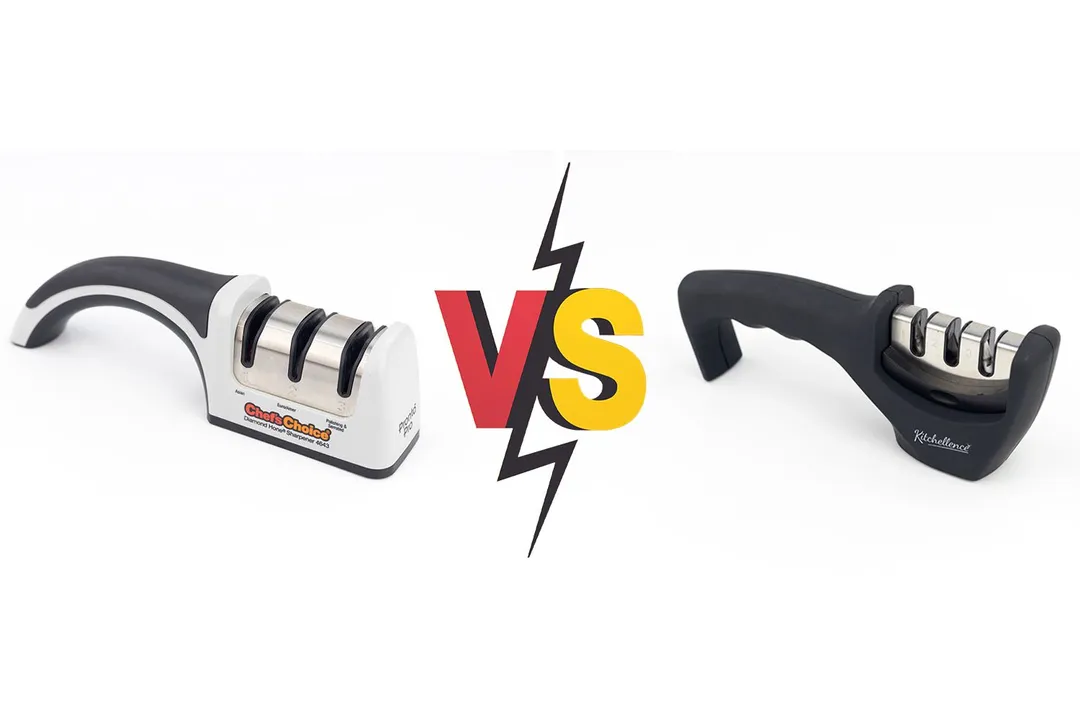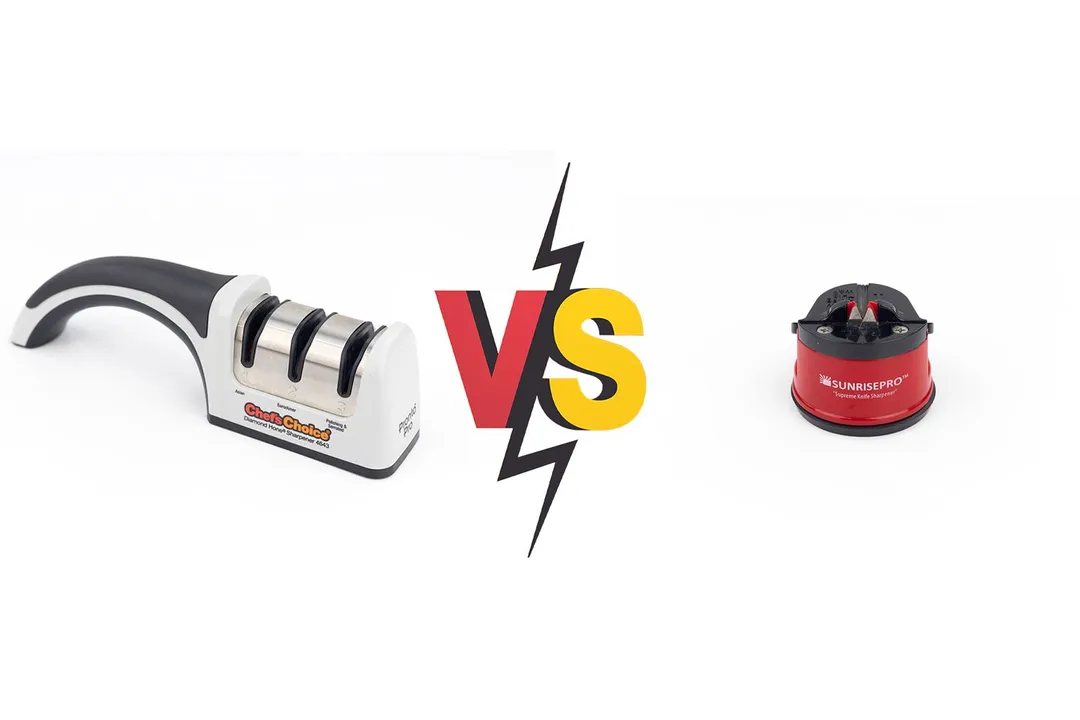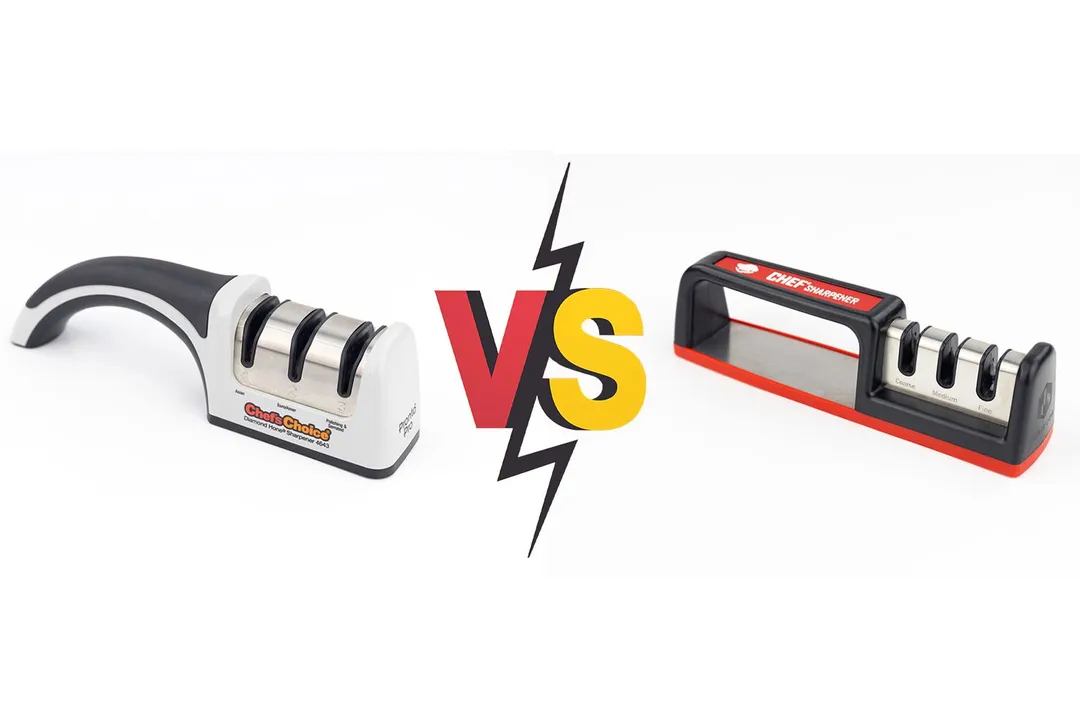Our recommendations are made independently through Research & Testing. We may receive commissions from purchases made via our links.
Chef's Choice 4643 vs. Mueller 4-Stage Manual Sharpener Side-by-Side Comparison
We compare the Chef’s Choice 4643 3-stage vs. the Mueller 4-stage manual sharpener in all performance parameters. Here are the details.
Chef's Choice 4643
Tested Using Methodology v1.1Mueller 4-Stage
Tested Using Methodology v1.1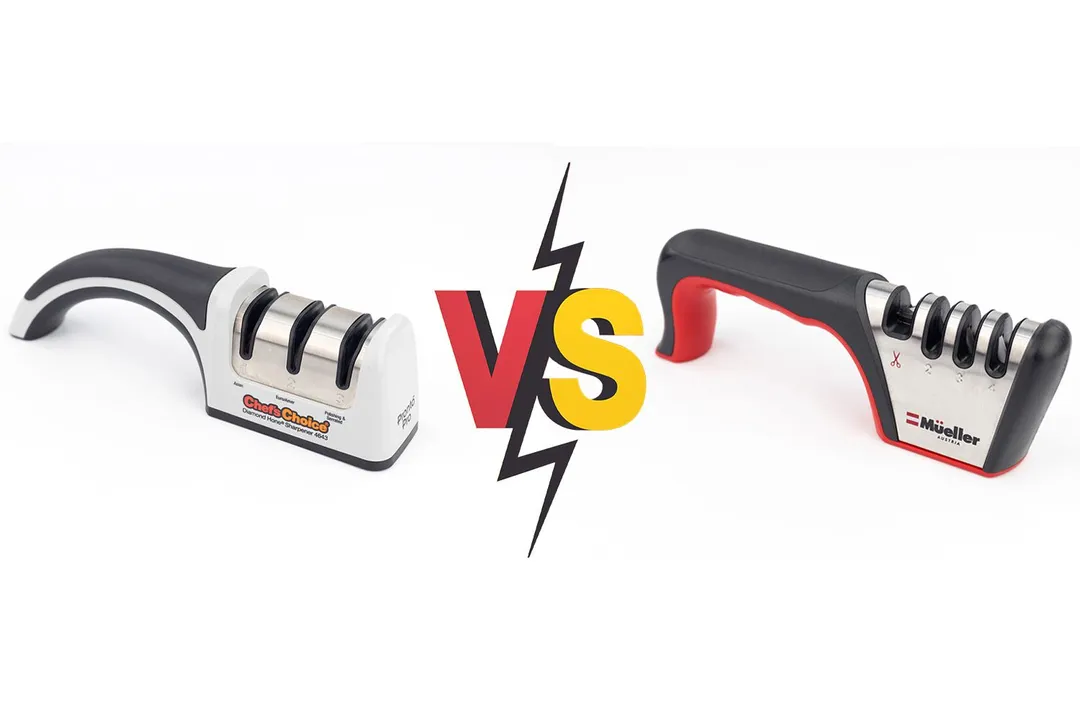
Overall Verdict
The Chef’s Choice 4643 may be double the price of the Mueller 4-stage sharpener but our test results revealed the latter to be the more effective one.
The Chef’s Choice 4643 has a great design. Though lightweight, it sports four rubber feet that keep it well balanced and in place during the hardest pulls. In terms of stability, the Mueller is okay but it does depend on its heavy weight and the tall body doesn’t particularly help either.
That being said, the Mueller fared much better in speed and sharpness. The Chef’s Choice 4643’s unconventional disc design, while performing well at preserving knife material, couldn’t bring a keen edge to it.
Pros & Cons
- Works with 20° and 15° edges
- Compatible with serrated blades
- Grippy handle
- Neat, ergonomic overall design
- Strong construction, pretty coloring
- Quick sharpening
- Scissor slot
- Ease of use
- Expensive price
- Awkward slot layout
- High center of gravity
- Harsh on the knife edge
Key Specs
Where to Buy
*You help support HealthyKitchen101's product testing and reviews by purchasing from our retail partners.
Analysis and Test Results
Performance
Sharpening Time to Cut a Lemon
Material Retention
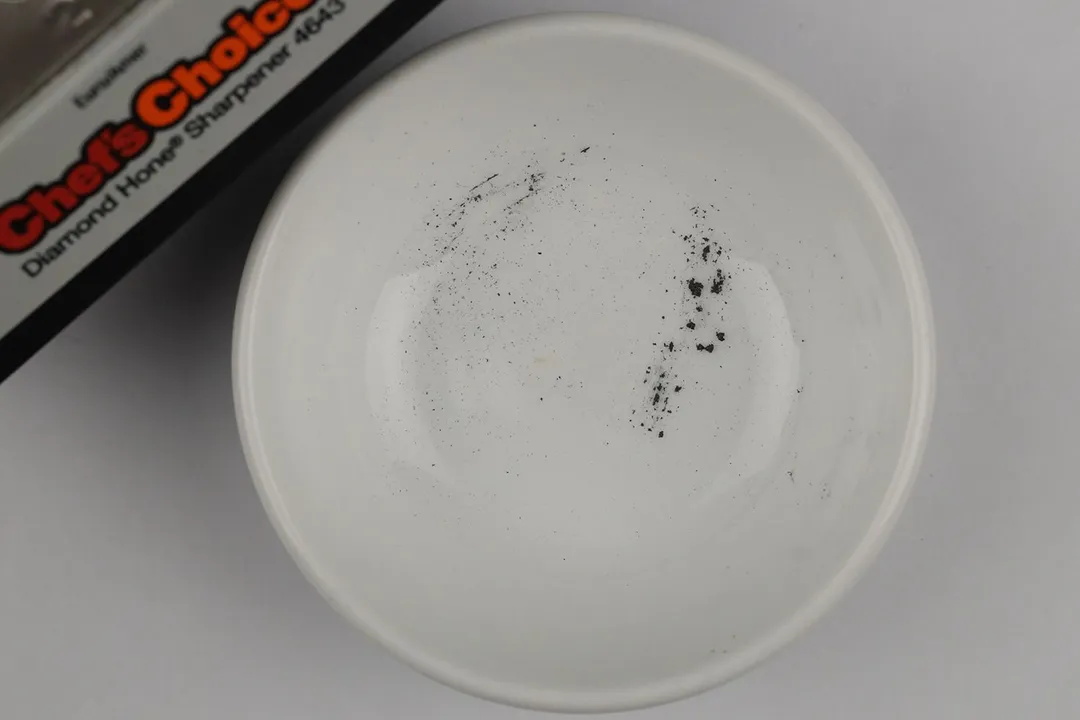


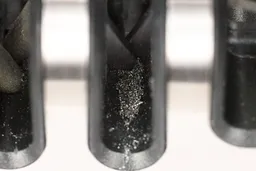
Maximum Sharpness Achieved
Edge Smoothness
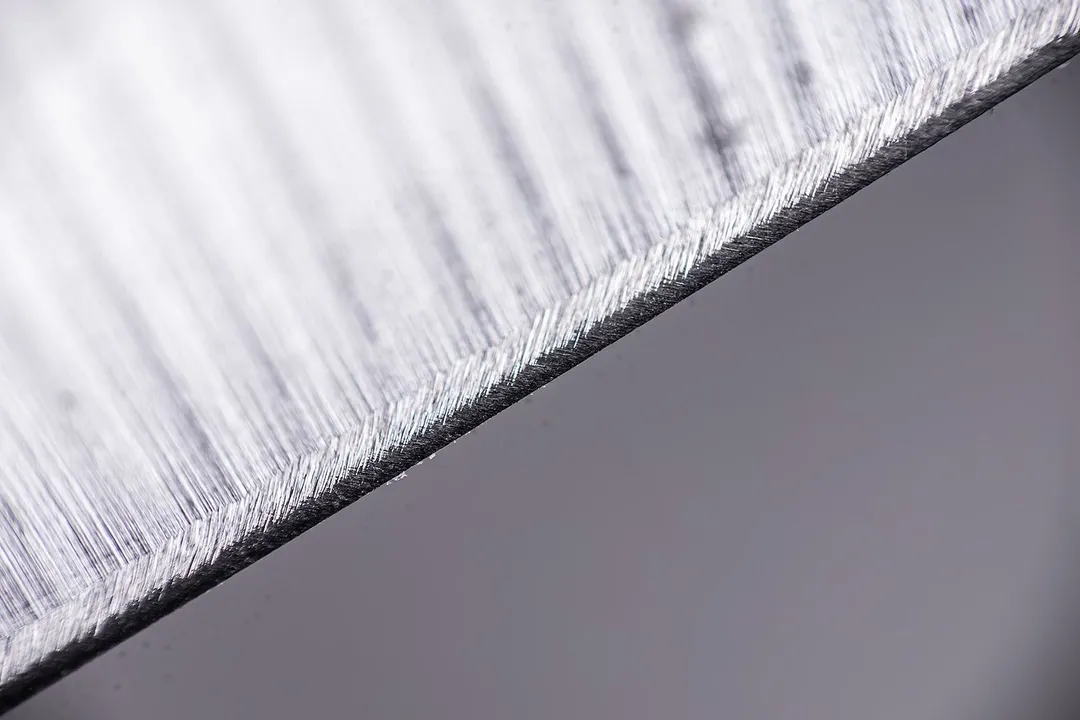
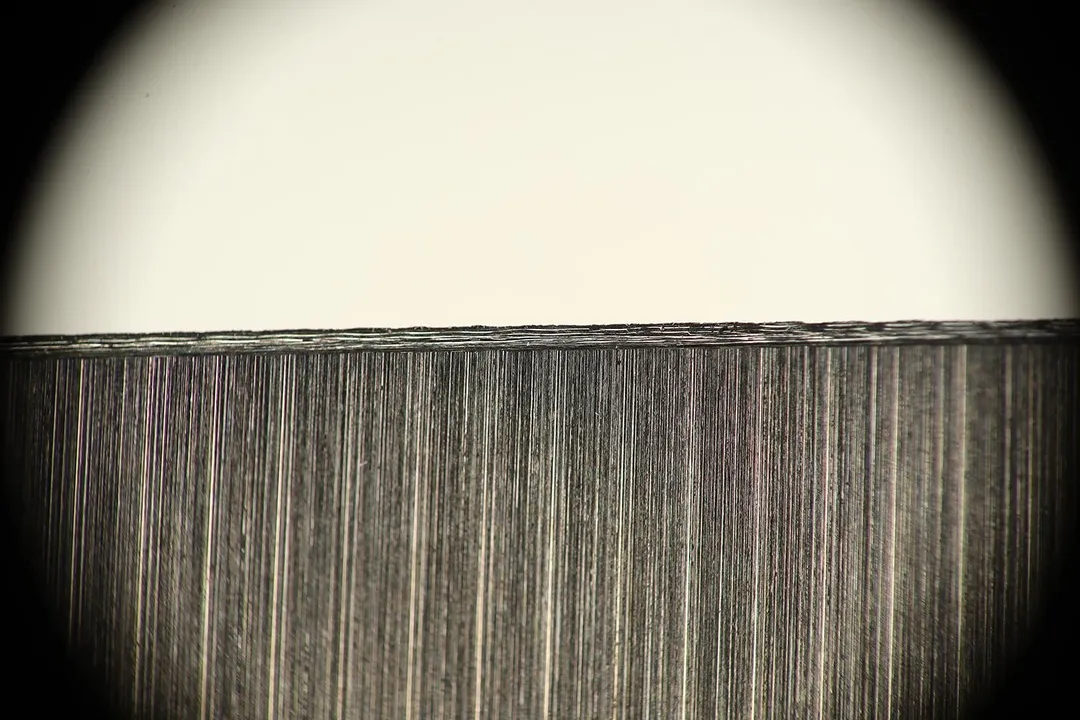
Design
In the Box
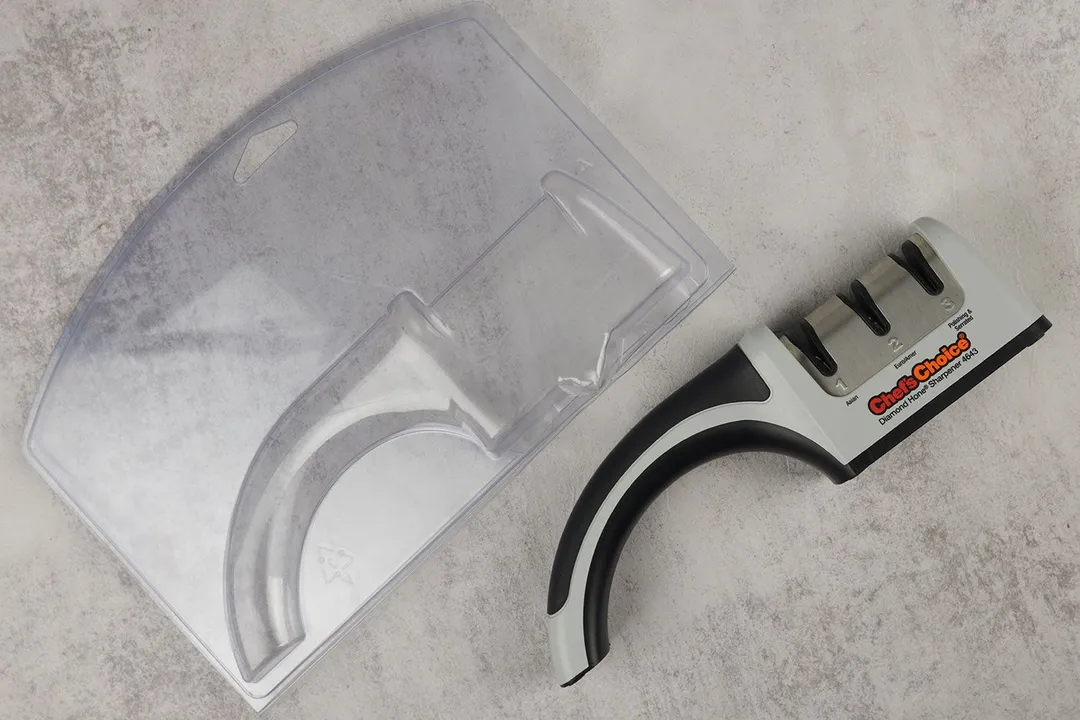
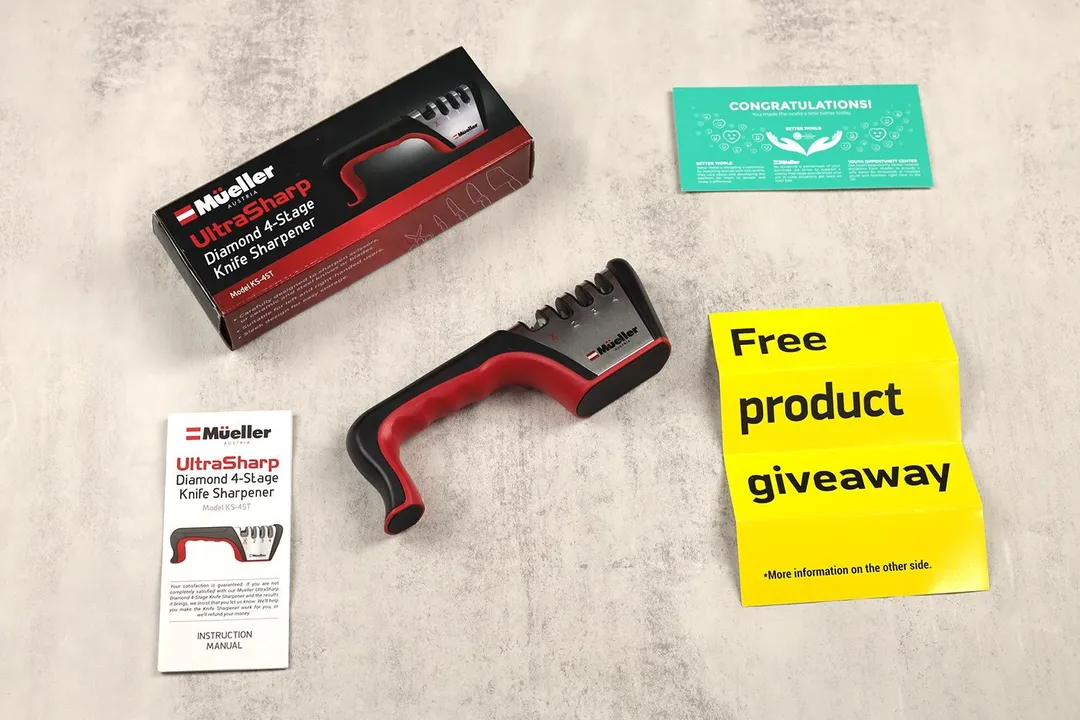
Dimensions
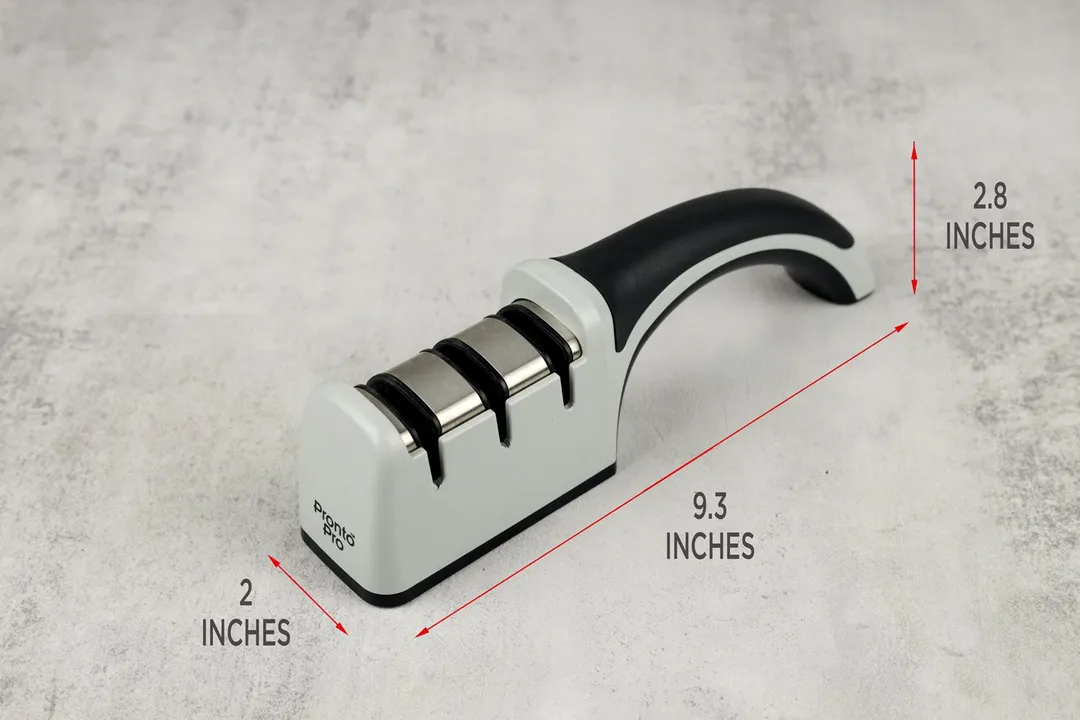
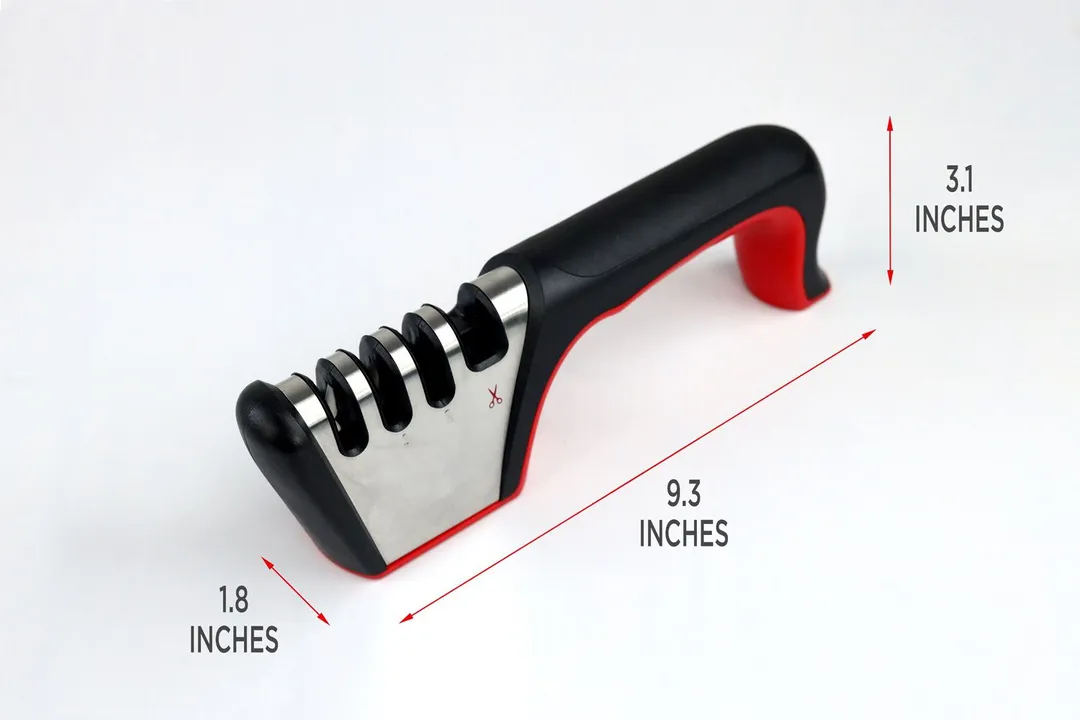
Build Quality
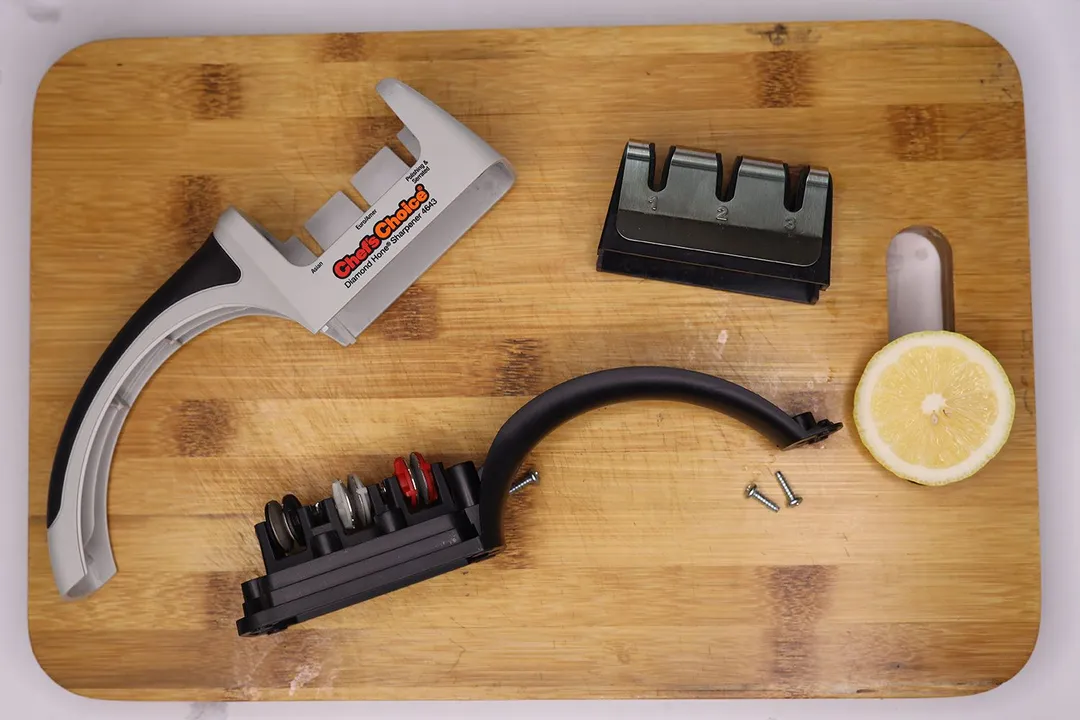
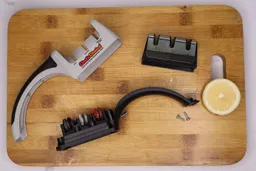
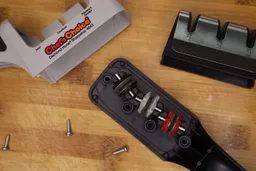
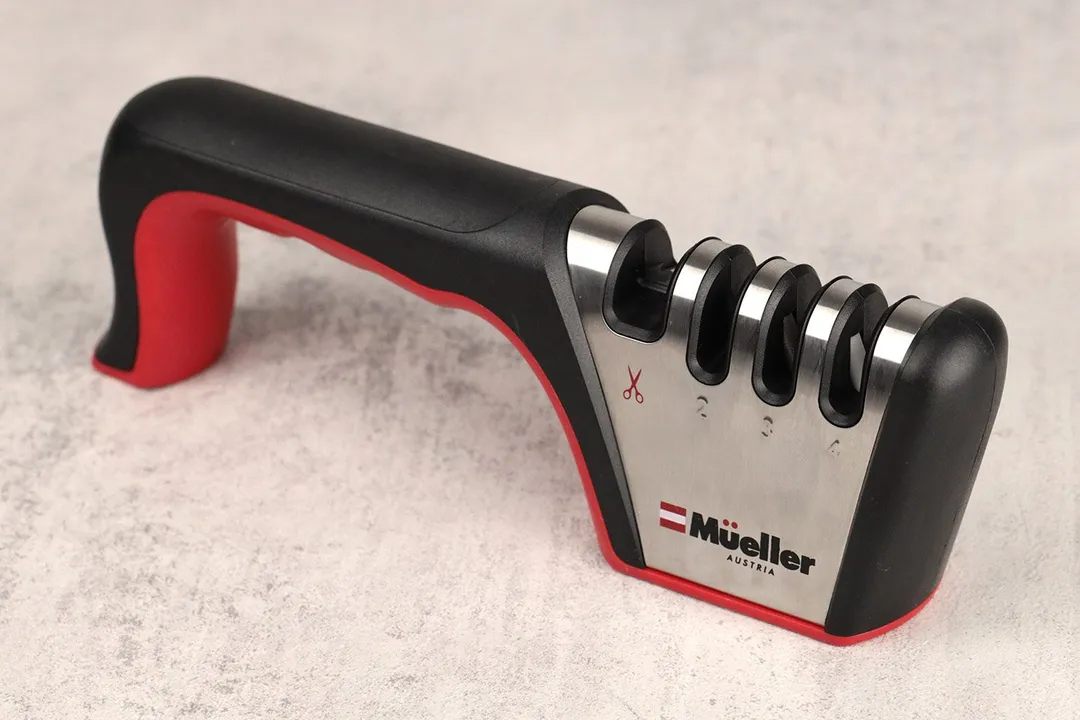
Working Section
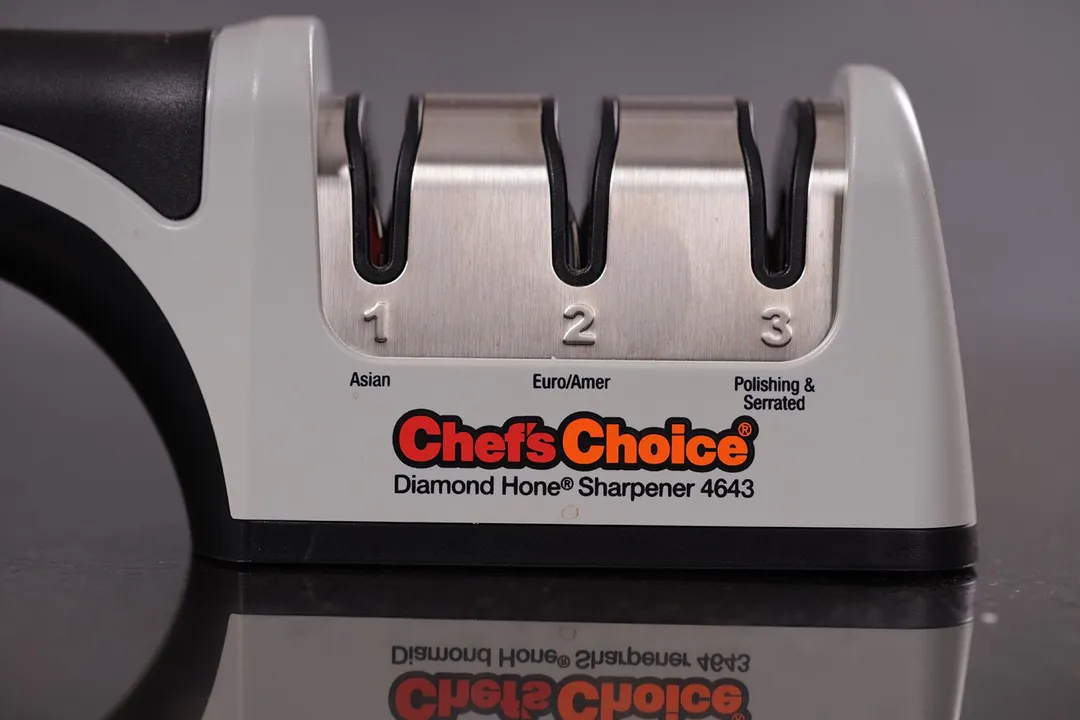
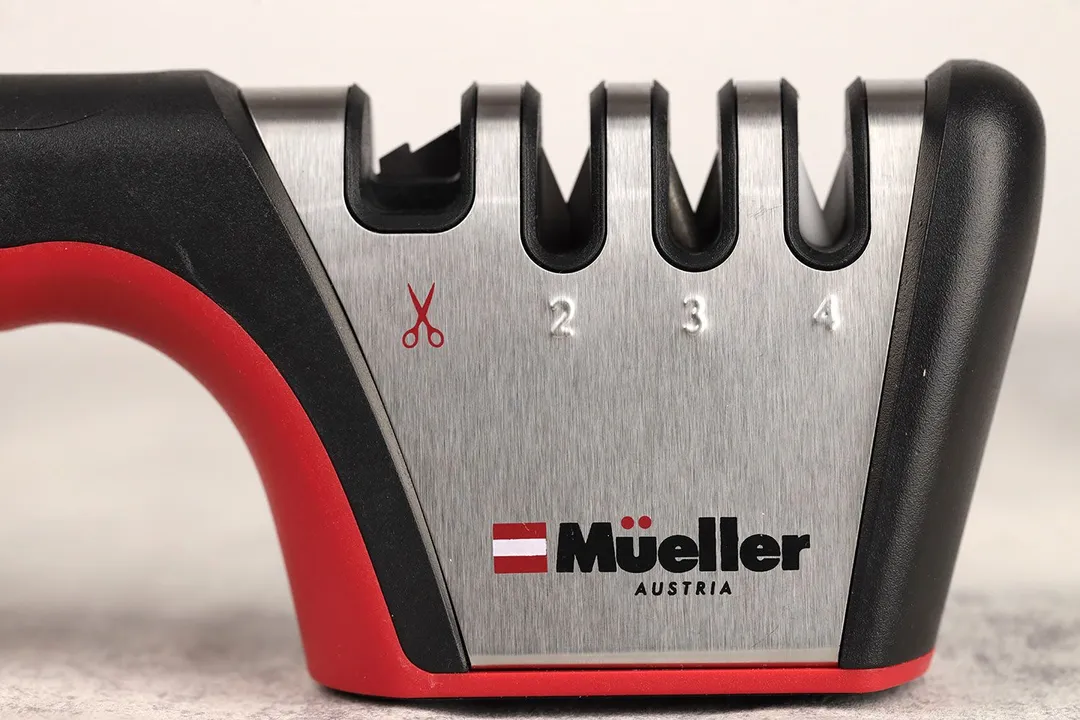
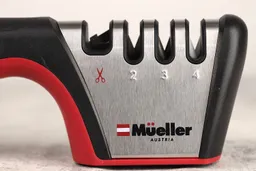
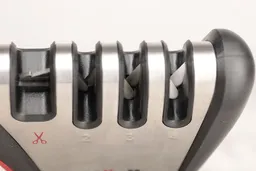
Base

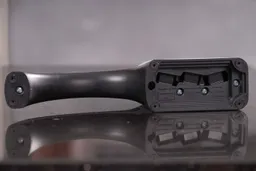
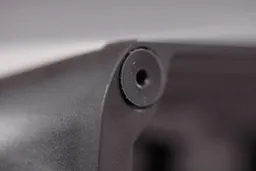

Grip

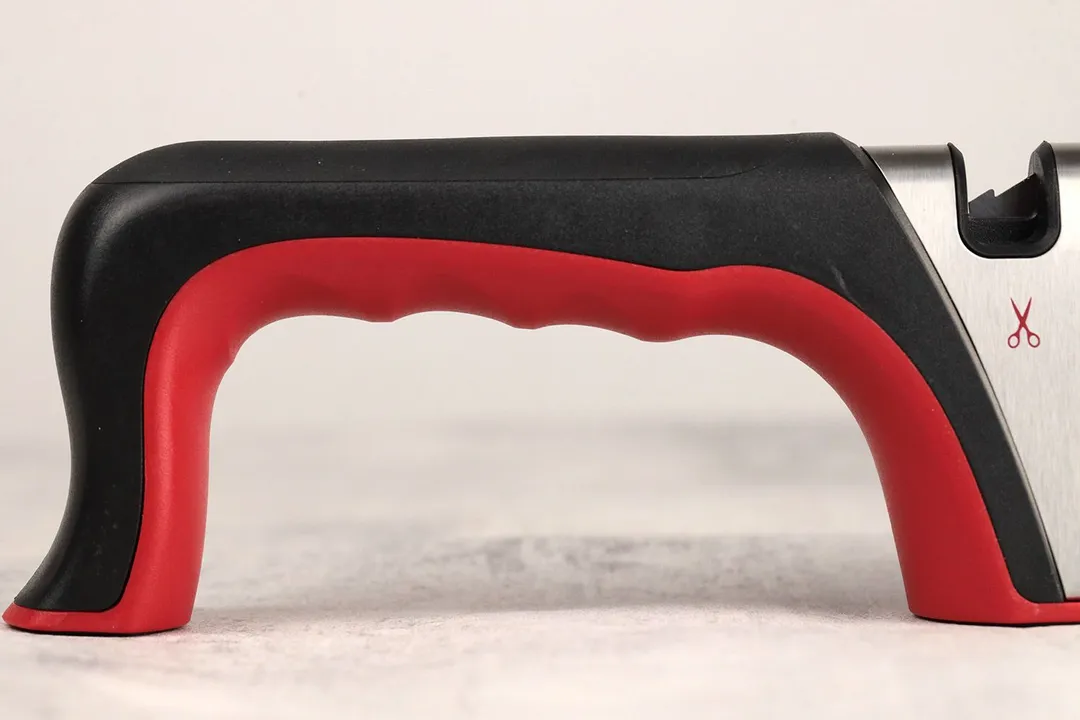
Usability
Slot Arrangement
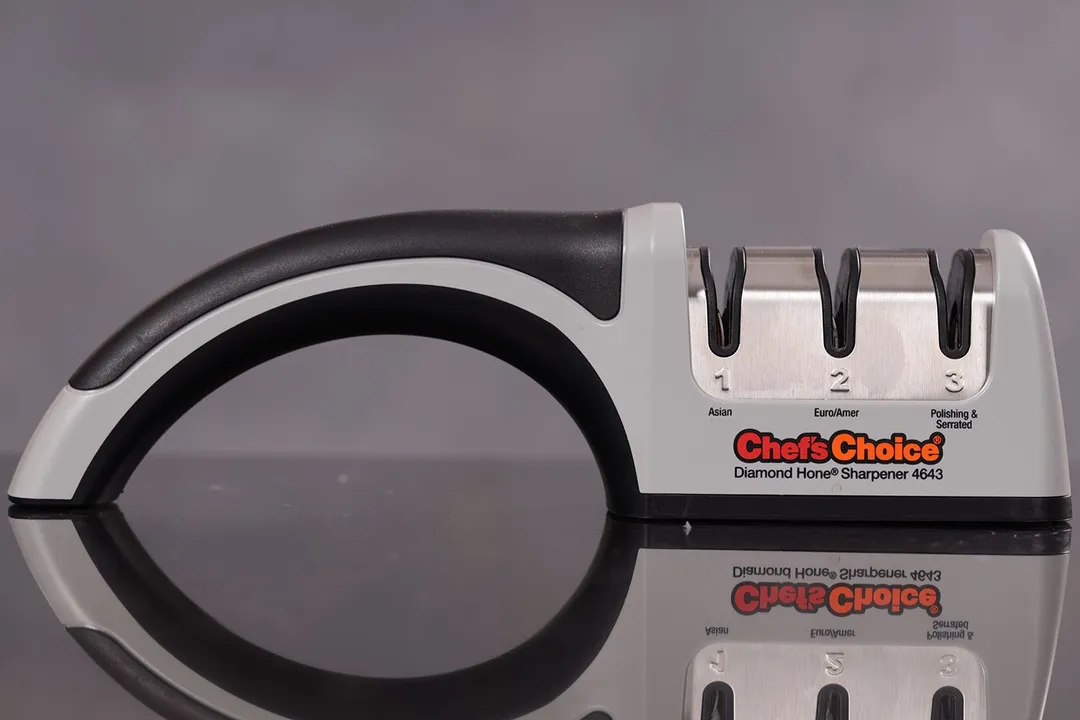
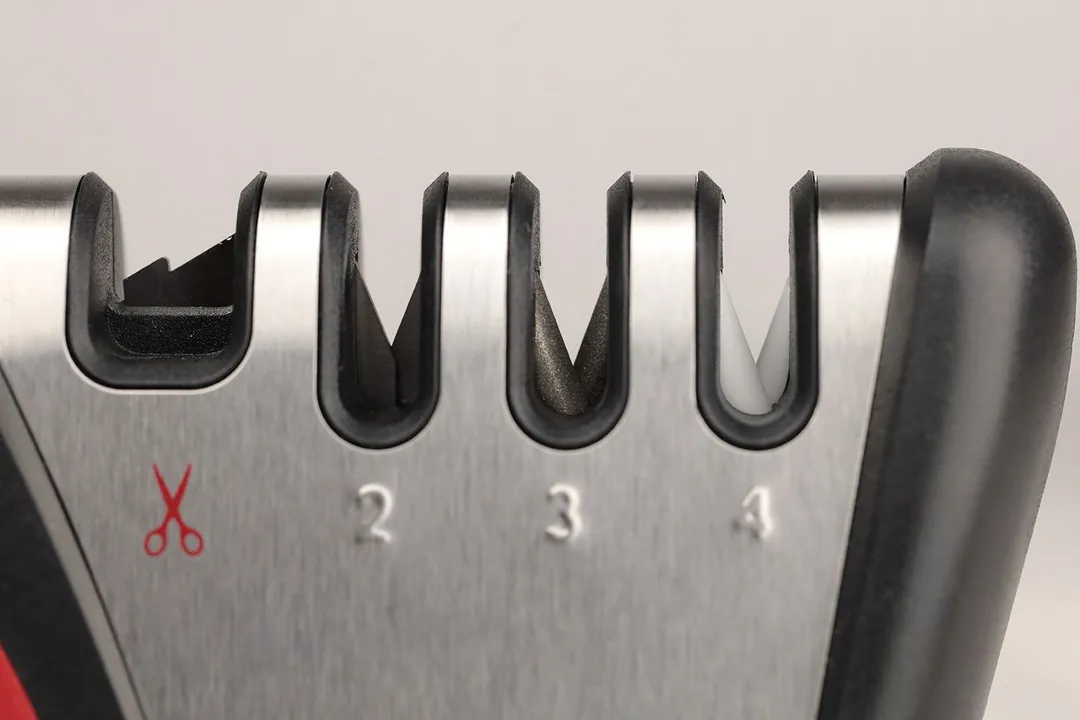
Insertion

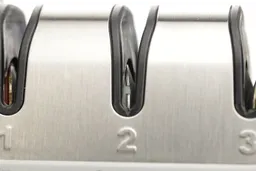
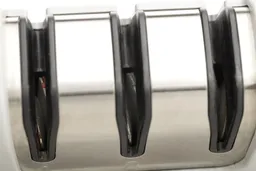
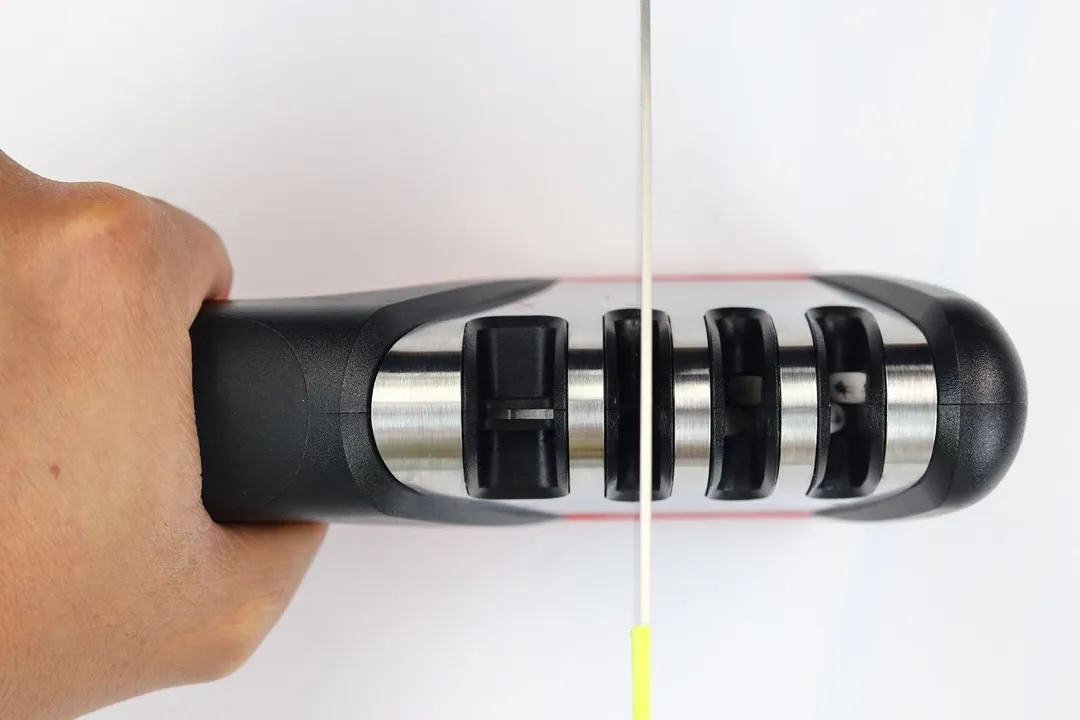
Pulling Through
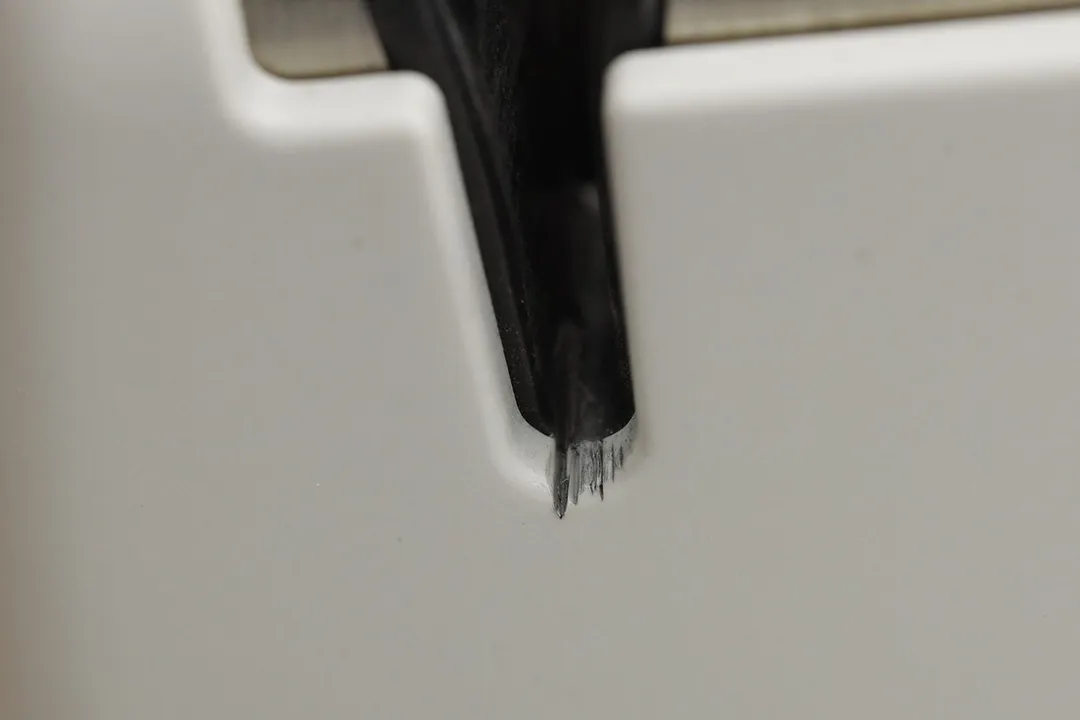
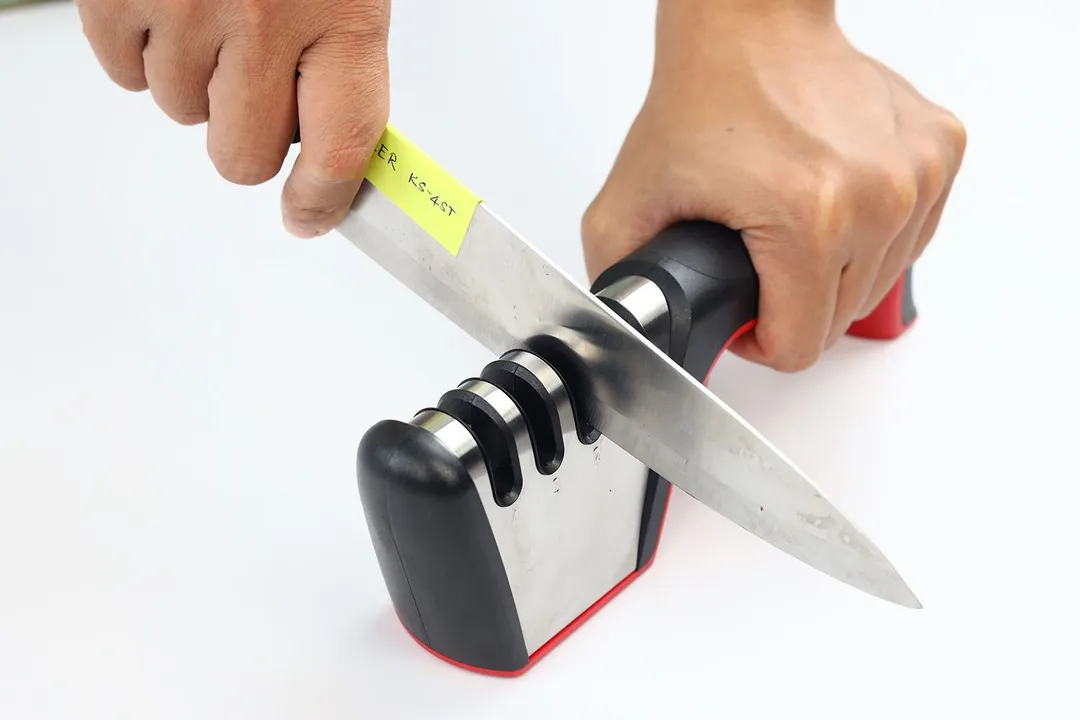
Stability on a Clean Surface
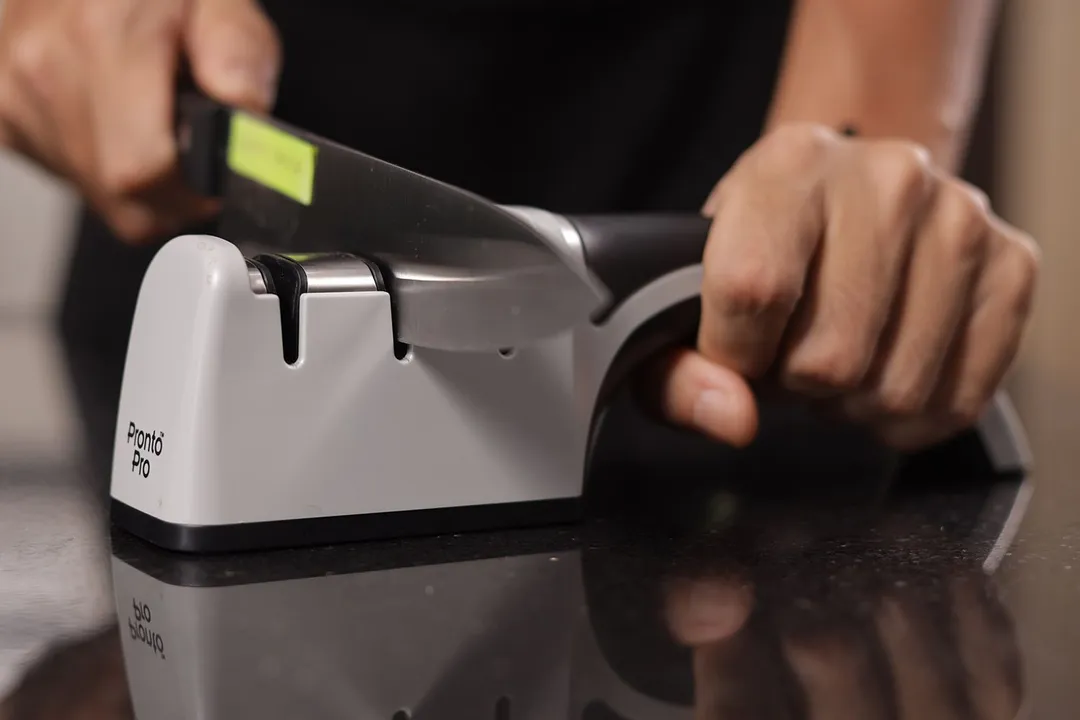
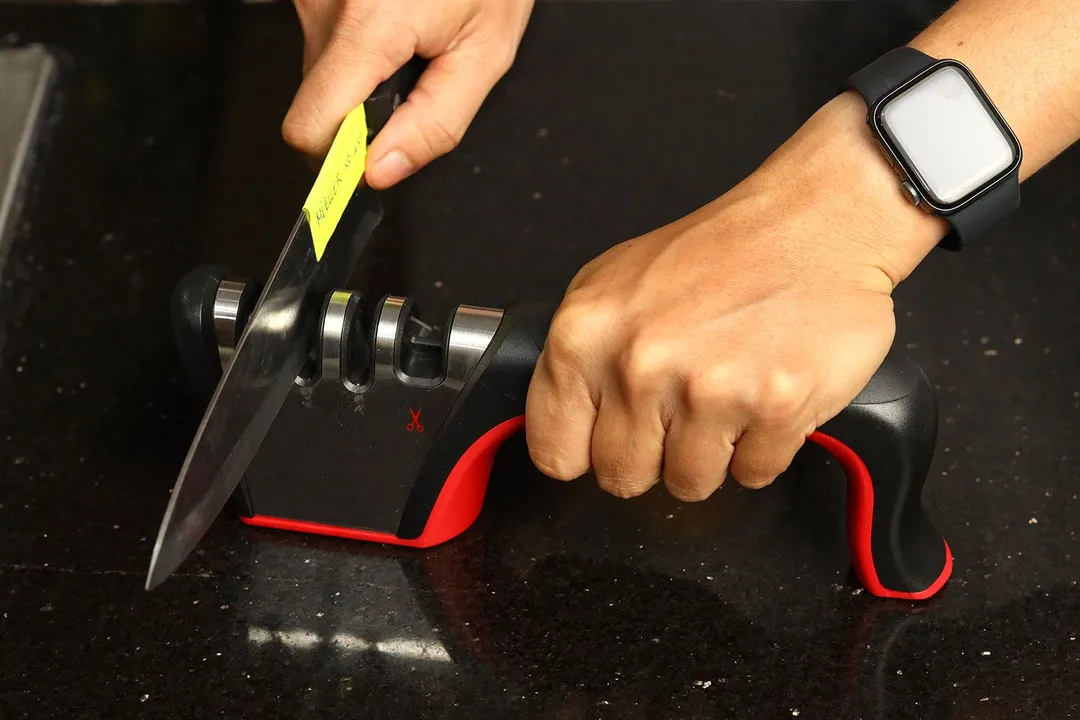
Stability on a Wet and Dirty Surface
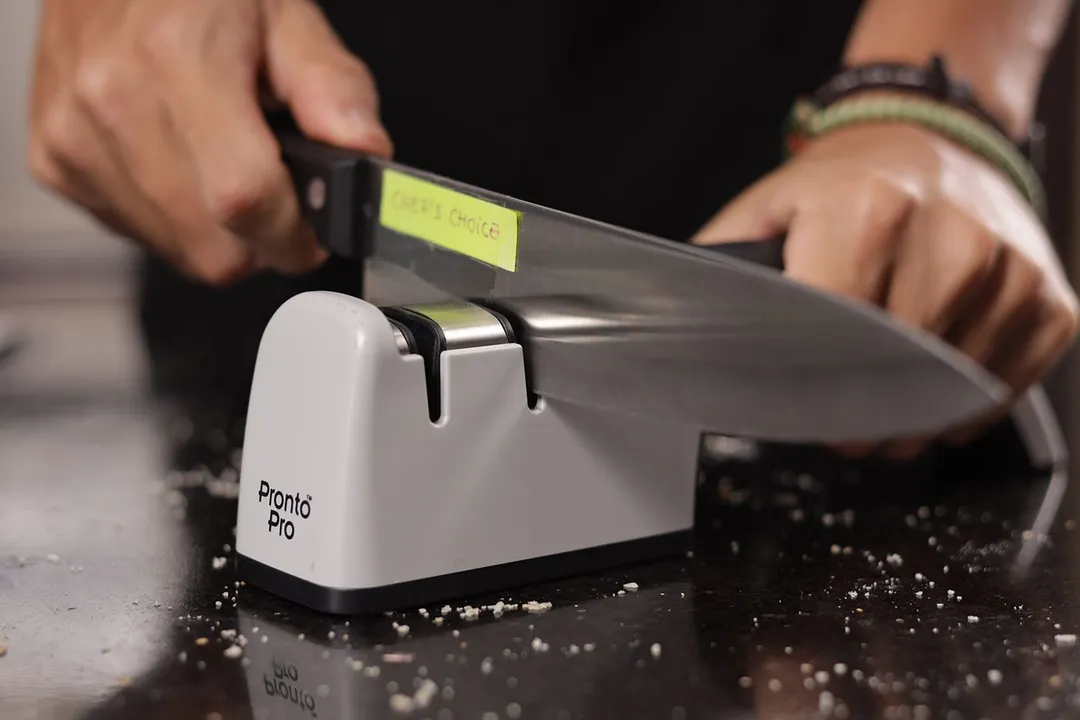

Behind the Comparison
Anh Ngo is a writer with 9 years experience at different media outlets, covering from public news and events to product testing and analysis. At HealthyKitchen101, she works across different departments, communicating closely with its network of writers, editors, and health, tech, and search engine experts to provide a meaningful and pleasant reading experience for visitors.
Lap is Head of the Research, Testing, and Review Team (RTR Team) at HealthyKitchen101.com, where he directs and supervises the testing of kitchen gadgets and appliances.
Nguyen Ntk is a graphic designer, photographer, and videographer whose philosophy centers around respecting and celebrating the beauty of reality. Through his lenses, Nguyen strives to capture the true essence of objects and events, showcasing and highlighting authentic features without distortion or exaggeration.



